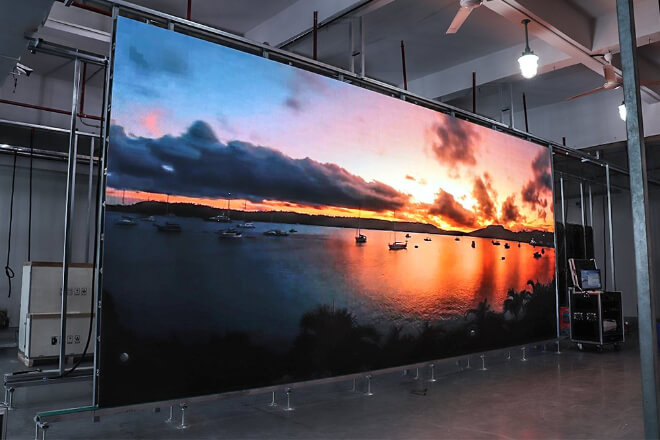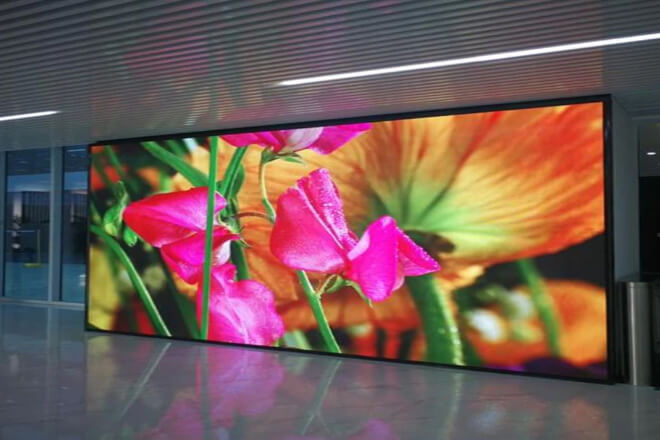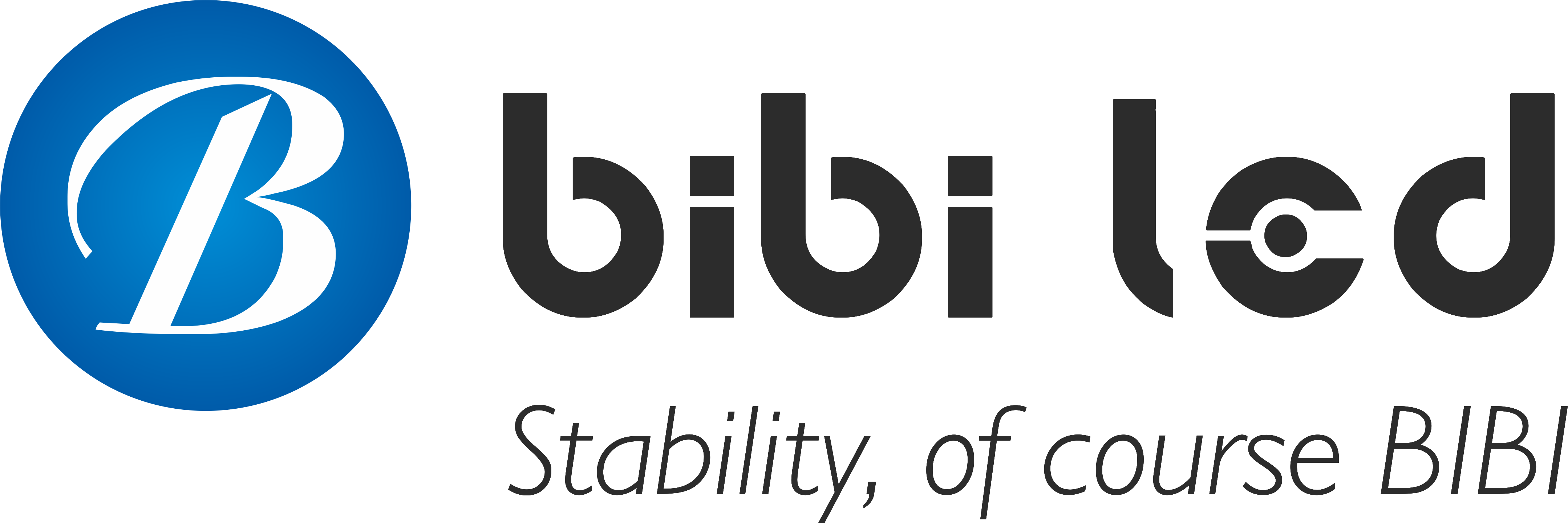Introduction

Want to know which industries are best suited for LED screen investments? Don’t worry, this article will help you find out.
Doesn’t investing in LED screens sound exciting? In fact, it can not only make you money, but also offer many unexpected benefits!
Next, let’s take a look at how these industries are thriving thanks to LED screens!
Table of Contents
1. What are the benefits of investing in LED screens for investors?

Compared to traditional billboards, LED screens offer high brightness, high definition, and dynamic content updates.
Brands are willing to pay more for attention-grabbing ads, so advertising revenue from LED screens is often higher than that of ordinary outdoor billboards.
For example, LED screens installed on a commercial street can not only display static ads.
But also dynamic short videos and interactive event information, making advertising more intuitive and attracting more customers.
With the development of smart cities and digital business environments, more and more businesses are choosing to advertise on LED screens, allowing investors to obtain long-term and substantial returns.
The flexibility of LED screens is a major advantage.
Besides long-term advertising, they can also accommodate short-term projects such as holiday promotions, brand launches, mall events, or temporary exhibitions.
For example, during a mall’s anniversary celebration, the LED screen could be used to broadcast interactive raffles or real-time leaderboards, engaging customers and increasing advertising revenue.
This diversified operation means investors can generate multiple revenue streams from the same screen, beyond fixed rental income, thereby improving their overall return on investment.
Advertising revenue from LED screens tends to increase with economic development and rising consumption levels.
Brands’ advertising budgets typically rise with rising market demand, and rental income from LED screens also increases accordingly.
For example, during major holidays or shopping seasons, advertising volume increases, leading to a corresponding increase in rental income.
This characteristic makes LED screen investments somewhat inflation-resistant, ensuring stable returns during economic fluctuations and making them more attractive than some fixed-income investments.
LED screens are suitable for a wide range of scenarios, from commercial streets, shopping malls.
And transportation hubs to exhibitions, concerts, and cultural events. Investors don’t have to worry about fluctuations in a single industry.
For example, if advertising demand in a mall declines, the screens can still be rented out at exhibitions or festivals, generating returns.
This multi-scenario application effectively diversifies risk, enhances investment stability, and allows investors to flexibly adapt to varying market conditions.
Industry 1: Commercial Complexes and Shopping Malls
LED screens offer significant investment value in commercial complexes and large shopping malls.
First, these venues attract high foot traffic, naturally resulting in high advertising space value.
For example, the Mall of Dilmunia in Bahrain installed the Middle East’s largest 8K LED canopy screen, providing immersive, glasses-free 3D imaging.
This screen elevates the mall’s visual experience to a new level, attracting significant attention from visitors and customers.
This is highly attractive for brand promotion and means relatively stable and profitable advertising rental rates.
Second, LED screens can leverage the advantages of dynamic content, allowing for creative displays in conjunction with festivals or brand promotions.
For example, during the Double 11 shopping festival, LED screens can broadcast real-time flash sales, interactive raffles, or brand promotional videos to attract customers.
During the Christmas season, screens can feature festive animations, projected light effects.
Or interactive mini-games, allowing customers to experience the festive atmosphere while shopping and enhancing the overall shopping experience.
Furthermore, the flexible content updates of LED screens allow commercial complexes to flexibly adjust advertising content based on time periods and event needs, allowing for the simultaneous display of multiple brands and events.
For example, in the morning, they could primarily broadcast children’s brand ads, switch to fashion apparel promotions in the afternoon, and display restaurant promotions in the evening.
This flexibility not only expands advertising revenue channels but also increases investor return potential.
Overall, investing in LED screens in commercial complexes and shopping malls not only generates stable revenue from high customer traffic.
But also creates added value through festive events and interactive advertising, making it a highly worthwhile investment.
Industry 2: Transportation Hubs and Outdoor Advertising
In transportation hubs and outdoor advertising, the profitability of LED screens is evident.
Think about places like highways, subways, and airports. Huge numbers of people pass through them daily, creating naturally high-exposure scenarios.
For example, the large screens along the I-405 freeway in Los Angeles are seen by tens of thousands of drivers and passengers daily. With such high-frequency exposure, brand advertising naturally achieves exceptional results.
Even better, these screens operate almost 24/7. LED screens are weatherproof, dustproof, and sun-resistant, allowing them to reliably display advertising content day or night, rain or shine.
For example, the LED screens at New York’s Kennedy Airport ensure that ads continue to play regardless of flight frequency or nighttime flights, ensuring a secure return for investors.
Adding to the flexibility, LED screens at subway stations and airports can adjust their content at any time.
For example, they could display commuter-related ads during rush hour, switching to travel and leisure-related ads during lunch and weekends.
Before holidays, airport screens can display airline promotions or duty-free shop discounts.
The screens are easily updated, maximizing returns for investors and satisfying advertisers.
Another practical point: These LED screens are often equipped with intelligent management systems that allow for remote control and monitoring, reducing the need for manual maintenance.
The screen system at Singapore Changi Airport monitors screen status in real time, enabling immediate adjustments if any issues are detected, ensuring that ads reach the most people at the optimal time.
This acts as an added layer of insurance for investors, ensuring more stable returns.
In short, investing in LED screens at transportation hubs and outdoor advertising locations not only offers stable returns from high exposure but also enhances returns through flexible content updates and intelligent management.
Simply put, it means faster returns on investment with relatively low risk, making it a reliable investment option.
Industry 3: Sports and Entertainment
In the sports and entertainment industry, LED screens are absolutely indispensable.
Whether it’s a large stadium, a concert venue, or a popular esports event, LED screens instantly capture the audience’s attention.
Think of a football match, where pitchside LED screens display real-time scores, player stats.
And highlights, making it easy for spectators to follow the action while also increasing advertising exposure. This is a classic example of a highly commercialized scenario.
Furthermore, LED screens at concerts and music festivals are also highly eye-catching.
At K-pop concerts in Seoul, South Korea, or the Coachella Music Festival in the United States, giant LED screens behind the stage can display stage effects, lyrics, and audience interaction content, making the live experience even more captivating.
This immersive visual experience not only enhances the quality of the performance but also provides advertisers and sponsors with higher-value-added advertising opportunities.
The esports industry is a particularly high-demand emerging market for LED screens.
LED screens at esports events can display real-time team scores, player information, audience interaction data, and even commentary, allowing every viewer to participate in the action.
In addition, brand advertising can be placed on the sides or perimeter of the screen, offering a more intuitive and profitable experience than traditional advertising.
The inherent flexibility and interactivity of LED screens allow investors to quickly update advertising content based on the time of the event or performance.
For example, advertising could display event information during the day and switch to displaying sponsorships at night, generating multiple revenue streams from the same screen.
In general, investing in LED screens in the sports and entertainment industries not only meets audience demand for real-time information and interactive experiences.
But also creates high commercial value through dynamic special effects and advertising, making it an area with significant return on investment potential.
Industry 4: Exhibitions and Event Planning
In the exhibition and event planning industry, LED screens have become a near-must-have. Whether it’s for trade shows, road shows, or product launches, temporary rental of LED screens is in high demand.
For example, a large international exhibition center in Shanghai rents dozens of LED screens for each electronics show to display product promotional videos, interactive demonstrations, and brand messaging.
As soon as the screens light up, the entire exhibition area becomes vibrant, creating a sense of professionalism for exhibitors and visitors alike.
This scenario also offers a distinct advantage: high-frequency reuse. The same screen can be quickly switched between different events, eliminating the need for idle use.
A corporate roadshow in the morning, a brand launch in the afternoon, and a backdrop for a cultural event in the evening.
Asingle screen can earn back its investment within a single day, offering a short payback period and exceptional flexibility.
Compared to long-term, fixed advertising space, temporary rental models are more suitable for the fast-paced event market.
LED screens can also accommodate a variety of interactive and impressive displays.
Events can feature dynamic effects, interactive voting, or real-time data, allowing audiences not only to watch but also to participate.
For example, at a new car launch, LED screens displayed real-time model animations and parameter comparisons.
As well as interactive raffles where audiences could scan QR codes to participate in voting or answer questions, maximizing the user experience.
With increased interaction, advertising effectiveness is more pronounced, naturally leading brands to invest more.
Furthermore, LED screens are now highly efficient to install and transport, allowing professional rental teams to set up a site in just a few hours.
For investors, this means quick project launch, a quick return on investment, and relatively low risk.
In general, the advantages of LED screens in the exhibition and event planning industry are clear: fast rental, high-frequency reuse, flexible content, high interactivity, and the ability to capitalize on various event opportunities.
With a fast return on investment and high potential, they are a highly worthy investment opportunity.
Industry 5: Education and Training Institutions
LED screens have numerous applications in schools and training institutions.
For example, they can be used for campus events, course presentations, information announcements, and even interactive learning.
Imagine a university auditorium displaying student work, academic lectures, or school promotional videos on a fine-pitch LED screen.
The images are clear and vivid, instantly captivating the audience – a far superior experience compared to traditional projection or blackboards.
LED screens can also be used in training courses to enhance the classroom experience. In language classes, programming classes.
Or art classes, teachers can present material, animated demonstrations, or interactive exercises on the screen in real time, allowing students to intuitively understand key concepts and steps.
Making it much easier to understand than with a traditional blackboard or projection. This makes classes more engaging and learning more efficient.
Furthermore, LED screens can also add value to schools or training institutions.
For example, placing a high-quality LED screen in the lobby or exhibition area to broadcast student awards, course highlights.
Or school activities will give parents and students a sense of professionalism and modernity.
For example, one international training institution installed an LED screen at the entrance, showcasing student work and highlights of activities.
Many parents have signed up after seeing it. In general, using LED displays in educational and training institutions not only makes classes more engaging but also enhances the institution’s professional image and appeal, killing two birds with one stone.
Industry 6: High-end Retail and Chain Brands
LED displays are becoming increasingly common in high-end retailers and chain stores, and their effectiveness is highly visible.
For example, a dynamic LED screen in a display window, showcasing new products, limited-edition collections.
Or fashion shorts, not only catches passersby’s attention but also attracts more customers into the store.
Imagine a mall window at night flashing with a high-definition LED screen showcasing the latest bags or shoes.
Passersby will be tempted to stop and take photos, or even walk in to take a look. This “attraction” simply can’t be matched by traditional static display windows.
LED displays can also help stores achieve digital upgrades. Beyond displaying advertisements, they can also display inventory information, promotions, and exclusive member-only content.
They can even integrate with in-store interactive systems to provide a more personalized customer experience.
For example, an international cosmetics brand’s flagship store uses LED screens in its windows to show skincare tutorials and new product trials.
Many customers visit the counter after watching these videos, naturally increasing average order value.
Even more conveniently, LED screen content can be updated at any time. Brands can quickly adjust displays based on seasons, holidays, or promotions, ensuring the windows remain fresh.
This flexibility not only attracts customers but also makes store marketing more targeted and generates faster returns.
In short, using LED screens in high-end retailers and chain stores not only makes windows more eye-catching but also enhances the customer experience and average order value through digital displays.
It is a secret weapon for improving brand image and sales performance.
Industry 7: Government and Public Information Dissemination
In the field of government and public information dissemination, LED screens are crucial tools for serving as a city’s “information hub.”
Imagine large LED screens in city squares, transportation hubs, or in front of government buildings.
They not only broadcast government announcements and policy interpretations, but also display public welfare campaigns and cultural events during holidays, making information more intuitive and convenient for citizens.
In addition to daily information dissemination, LED screens are also extremely useful for emergency notifications.
For example, during weather emergencies, traffic restrictions, or public safety incidents, the screens can display real-time scrolling notifications, allowing citizens to quickly understand the latest situation.
City screens in Singapore and Seoul, for example, can display emergency evacuation routes and safety reminders during typhoons or heavy rain, enhancing public safety.
Furthermore, the operating model of these screens is generally stable. Governments or public institutions maintain and update the content over time to ensure the accuracy of the information.
For investors, this means relatively stable maintenance and service requirements, which helps generate long-term, predictable revenue or partnership opportunities.
In summary, in the field of government and public information dissemination, LED screens are not only powerful tools for information dissemination but also fulfill public service and safety functions.
Stable updates and long-term maintenance requirements also provide investors with sustainable and reliable business opportunities, making this a sector with both social and investment value.
9. Key Points to Consider When Investing in LED Displays

Investing in LED displays may seem attractive, but to achieve stable returns, you must pay attention to several key points.
Different scenarios require different types of LED displays. For example, a commercial complex window display or shopping mall might require a large, high-brightness display with long-distance visibility.
Educational institutions or training classrooms are more suited to indoor displays with fine pitch and high resolution.
Before investing, it’s important to first consider the industry you’re considering and then select the appropriate LED model based on the industry’s needs.
Otherwise, the screen you purchase might not be used or perform poorly.
Investing in an LED display involves more than just the equipment itself; it also includes installation, maintenance, electricity, and content production costs.
For example, for outdoor highway displays, in addition to the high equipment cost, additional expenses such as waterproofing, dustproofing.
And lightning protection must be considered. Plan your budget well in advance to avoid overspending or disruptions to subsequent operations.
10. Conclusion
After reviewing these industries, don’t you think there are opportunities everywhere to invest in LED displays?
Whether you’re looking to attract attention in a shopping mall or capture the gaze of passersby at a transportation hub, LED displays can help you reap significant profits.
Finally, if you’d like to learn more about LED displays, please get in touch with us.
